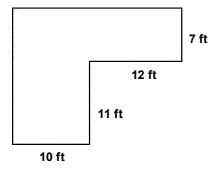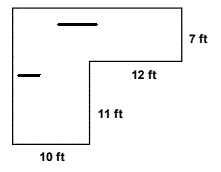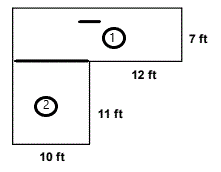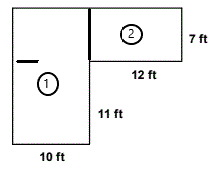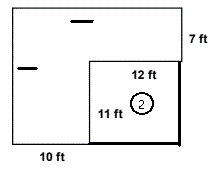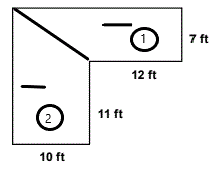
Areas of Composite Shapes
|
||||||||
|
(2011 Olympiad, 6th grade geometry #2): Find the area of the shaded area in this figure. The diameter of all the circles is 10 cm. 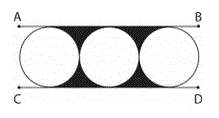
|
 1. The line segments AB and CD touch the circles at their half-way points.
1. The line segments AB and CD touch the circles at their half-way points.2. Draw a rectangle whose corners are the points where the lines touch the outer circles on both the AB line and the CD line. 3. Compute the area of this rectangle and then subtract the areas of the included circles. There are 2 circles included in this rectangle. (one whole one and 2 halves) 4. Since the diameter of each circle is 10 cm., the width of the rectangle = ____ cm. Rectangle area = ______ sq. cm. 5. Subtract the areas of the included circles to get the shaded area = _______ - 2  R2 = R2 = _______ - 2 x 3.14 x _____ = _____ sq. cm. |
